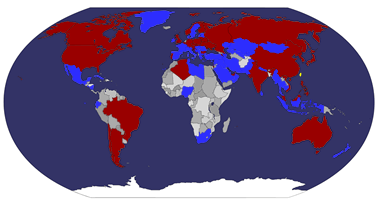Fruit Loop - Tourisme rural

Post publicize this issue, as soon as Mercosur, the Fruit Loop, composed of ten municipalities related to fruit production, including exports, and rural tourism.
The horticulture export has been growing rapidly every year in Brazil, and also represents a huge potential to be exploited. Our primary customer is Russia, which concentrates the largest share of the volume of Brazilian exports of fresh fruits. This has promising export market as other destinations, mainly Canada, UAE, China, USA and other countries of Eastern Europe.
The Fruit Loop is a major and more well structured tour of the state of Sao Paulo. The Circuit is in strong farm, producing fruit (grape, strawberry, persimmon, peach, fig, plum, guava and cherry, among many others) and its derivatives, such as liqueurs and jams.
Also known as Polo Turístico Fruit Loop, consists of 10 municipalities (Atibaia Indaiatuba, Itatiba Itupeva, Jarinu, Jundiaí Louveira Morungaba, Valinhos and Vineyard) with traditional and diversified production in the area of horticulture. The total area of the municipalities that make up the Fruit Loop is 2383 km ² with a population of 1,030,035 inhabitants in 2008.
The region is a small paradise. Amidst the beautiful scenery, stand out in the Fruit Circuit rural tourism, fruit production, artisan production of wine and sweets and contact with the cultural and historical roots of Brazilian people.
Near the Greater Sao Paulo, the Circuit Fruit has one of the best roads in Brazil, with emphasis on the Anhanguera and Bandeirantes. It is also located close to major airports in the state, as Cumbica Airport, in Guarulhos, Congonhas in Sao Paulo and Viracopos, in Campinas. The region of the circuit began to be populated with the occupation of territory in the seventeenth century. During the eighteenth century was the Jundiaí tropeirismo warehouse and from the nineteenth century, its development was fueled by coffee.
In 1867, with completion of the railroad-Jundiaí Santos, the city became a strategic area of rail junction. There came then the first groups of Italians, Portuguese, Spanish, Japanese, German, English and Arabic. With the coffee crisis in 30 years of the twentieth century, the population of the region gave impetus to the diversification of crops, to the profusion of varieties currently grown. The origin of the Fruit Loop back to the mid-'90s, when farmers in the region sought to develop rural tourism alternatives for economic viability of their properties.
In 2000, 27 farmers met for the establishment of the Association of Rural Tourism Circuit Fruit. With the organization of the movement, he joined the municipal governments of the participating municipalities, with support of organizations like the Brazilian Service to Support Micro and Small Enterprises - SEBRAE / SP and the National Cooperative Learning - SESCOOP / SP. At the same time, the interest of the state government in the development of tours provided the necessary condition for that, October 2, 2002, was officially established the Polo Turístico Fruit Loop. Since then there has been a growing number of tourists who visit and enjoy their privileged nature and flavors of the field.









.jpg)























 taiwan
taiwan  cover or postcard
cover or postcard  FDC
FDC 






























































































1 comment:
why there have lot of postmark on cover?
Post a Comment